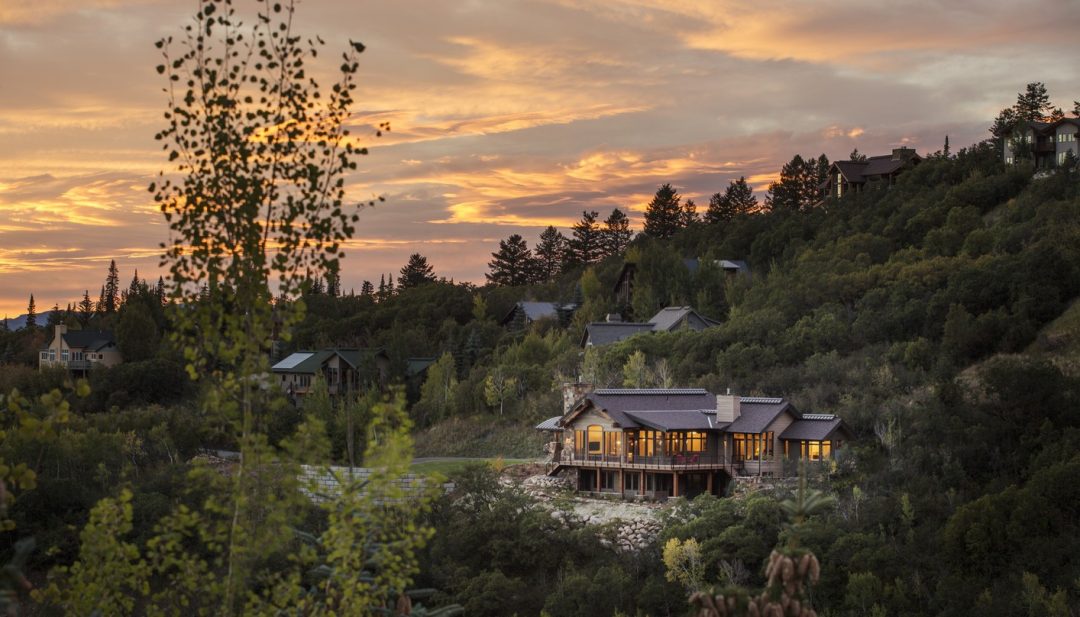Contemporary or modern? Rustic or industrial? A glossary of Steamboat style.
“People often get confused between a design style and a trend,” says Chancie Keenan, Principal Architect and Owner of Steamboat Springs-based Mountain Architecture Design Group (http://mtnarch.com/). “Clients will tell us they want a certain style and then they’ll show us photos of something else entirely. It can be a little tricky.”
Keenan has lived in Steamboat since 2002 and worked with MADG since 2006 on many public, residential and Historic Preservation Projects, so she has a wide scope on Steamboat architecture, past and present. “One of the most important design considerations is not to try to mimic the past. It’s important to differentiate the time periods,” she says. “But it’s also important to maintain a sense of place.”

Photo credit: Tim Murphy
When it comes to place, what defines Steamboat’s architecture style? “From the more utilitarian log cabin and the old craftsman bungalows downtown to the return of mid-century modern design, it’s all over the board,” Keenan says. “I have a client right now that wants a windmill and a silo to remind her of her Midwestern roots, so we’re trying to figure out a contemporary way to incorporate those elements into a mountain house. That is a first.”
Ultimately, Steamboat Springs is an eclectic mix of many individual styles and influences throughout the decades. Figure out what your style is and how to express it with this glossary of terms.
CONTEMPORARY
“Contemporary by definition is marked by the character of the current period. Contemporary is ever-evolving,” Keenan says. Many people confuse the terms “contemporary” and “modern.” While modernism is a specific architectural style, contemporary is a reference to the current time period, and can encompass many different styles.

Photo credit: David Patterson
MODERN
“This term refers to a specific time period that began in the 1930s and was popular through the 1960s,” Keenan says. Not to be confused with its literal meaning, modernism in architecture terms is characterized by “long linear forms with minimal ornamentation, flow between interior and exterior and large expanses of glass,” Keenan says. “Modernism has had a resurgence in recent years,” Keenan explains, “and I think this style will continue to remain popular, although I see a trend towards warmer colors and materials where we’ve been seeing a lot of cool tones.” Modern includes prairie-style and ranch-style homes that were popular in that era and made famous by Frank Lloyd Wright, but Keenan says these one-story, horizontally-oriented forms aren’t always easy to incorporate in the mountains where few building sites are truly flat.

Photo credit: Tim Murphy
RUSTIC
In terms of architecture, rustic is typically a term referencing interiors or specific materials rather than defining a specific style. “We definitely have a lot of clients who want a mountain retreat in that rustic vernacular, with a lot of stone and timber,” Keenan says. These homes feature indigenous materials like regionally quarried stone and big timbers with exposed heavy beams but with spaces that are integrated into a contemporary style, more open and flowing with large expanses of glass. “When people were building for utilitarian purposes they often created smaller rooms using locally sourced materials, which were then modified with multiple additions resulting in a medley of roof lines. That style evolved out of necessity. You can still incorporate those references into contemporary architecture or into your interior design.”
INDUSTRIAL
Keenan says you don’t see true industrial style much in Steamboat simply because those types of buildings aren’t common here. “Industrial refers to the repurposing of old industrial buildings into flats and studios, where people do cool things with old windows and big volume. We don’t have a lot of that in our area, but you can pull that style into your interior with materials like bare concrete, exposed steel with markings from the supplier or with visible welding. It has a distinct masculine feel,” Keenan says.
CRAFTSMAN
Many of the funky little old houses that give downtown Steamboat its unique character are Craftsman style. Keenan has worked on many historic restoration projects in the downtown area and is a big advocate for maintaining Steamboat’s downtown character. “When we do renovations on these smaller older homes, we attempt to either maintain the form and incorporate modern materials, or vice-versa. This helps maintain the historic character of the neighborhood while incorporating current design trends,” she says. Because of the strict zoning downtown, most renovations require “popping the top and going vertical” with the addition of a second floor. “The biggest things we’re seeing in old town are opening the tiny rooms for more social spaces and opening up interiors by creating larger windows or folding doors that can bring the outside in.” Historic preservation remains a priority for Keenan. “Cool old houses that are quirky and have character, those need to be maintained.”

Photo credit: Tim Murphy
TRANSITIONAL
“Modern has been trending heavily for the past decade and now people are drawn to that coziness again, to something that is more relatable—not one complete style or the other but a blending of styles,” Keenan says. This is characterized by a departure from the cool tones and colder materials of modern style and a return to warmer, more inviting materials and cozy spaces that might be considered more traditional. “The modern trend was fun, but now people want to reminisce a little bit about their past or where they came from.” Whether that means building a silo or returning to a steeper pitched roof, Steamboat’s eclectic architectural style ultimately comes from that blend of styles.
“There are so many different architectural vernaculars you can apply to a style,” Keenan says, “We are very accustomed to having those conversations because ultimately, it’s about giving the client what they want.”

